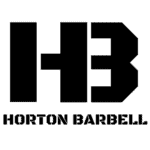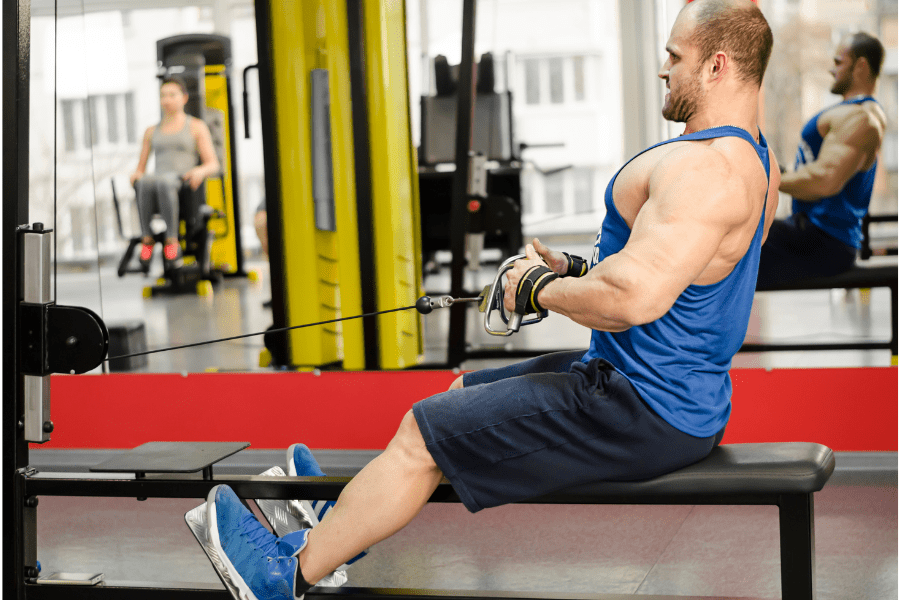12 Best Pull-Up Alternatives and Variations (2024)
Pull-Ups are, in my opinion, the ultimate upper-body exercise. There is no other exercise (yes, this includes Bench Press) that is more effective at building upper body strength and size.
However, as good as pull-ups are, there may be situations where you need an alternative for pull-ups.
Maybe you don’t have a pull-up bar or maybe you’re not able to do pull-ups (at least not yet!).
Whatever the reason, you’re in the right place. I’m going to share with you some pull-up variations and alternatives that you can do in place of Pull-ups.
Pull-Up Variations
These variations are basically pull-up modifications that will make your regular pull-ups either more or less challenging. So, whether you can do 25 pull-ups or are still working towards getting your first one, there should be a variation that can help you out.
Band Assisted Pull-ups
The first variation is one will give the lifter some assistance in getting up over the bar.
If you have a resistance band, loop it around the pull-up bar and then pull it down under the knee. You’ll need a thin enough band that you can pull under the knee and thick enough that it can provide enough assistance.
This is the best way to begin doing pull-ups and building strength until eventually you no longer need the band.
Partner Assisted Pull-ups
Instead of a resistance band, you can also use a partner to assist you with doing pull-ups. Have a partner place their hands on your lats and provide an extra boost to do pull-ups.
This can be especially helpful if you’re able to do a few pull-ups on your own and just need a little extra help finishing a full set.
Eccentric Pull-ups
This is another simple variation for anyone still working towards doing full pull-ups on their own.
Use your legs on a bench or safety racks to help get your chin up to the bar. Then, slowly lower yourself down to full extension. Use a 3 or 5-second count for as many reps as you can.
Weighted Pull-ups
Weighted Pull-ups are the first of two Pull-up variations that will make your pull-ups more challenging, not less.
There are multiple ways you can add weight to your pull-ups. A weighted vest, a dip belt or holding a dumbbell with the feet are a few of the most popular ways to add resistance to your pull-ups.
Tempo Pull-ups
The final variation is Tempo Pull-ups. By controlling the tempo of the rep, you can make pull-ups as challenging as you like.
Controlling the tempo simply means controlling the speed of the rep. So, for example, you can pull up at a one count, but then hold at the top for a two count and then control the eccentric (lowering) portion at a five count.
Pull-Up Alternatives
Now, let’s shift to actual Pull-Up alternatives. I’ve tried to include a wide variety of exercises including exercises that use different pieces of equipment. I’ve also included both beginner and advanced movements.
Hopefully, no matter what equipment you have access to or what your level of experience is, one of these alternatives will work for you.
Lat Pulldown

Lat Pulldown machines are pretty much designed specifically to be a Pull-up alternative. If you’re not able to do a Pull-up yet, and none of the assisted variations are an option either, Lat Pulldowns are one of the best Pull-up alternatives you can do.
Step-by-Step Instructions
- Depending on the machine or attachment that you’re using the setup may be a bit different.
- Regardless of the setup, try to position your torso predominantly upright with a very slight lean back.
- Grab the bar* just outside shoulder width grip with an overhand grip.
- Now, pull the bar down to your chest, squeezing the lats hard at the bottom.
- After a quick pause at the bottom of the rep, slowly bring the bar back up to the starting position.
Coaching Points
*This is assuming you’re using a standard long Lat Pulldown Bar. If you’re using a different attachment, this is going to vary.
Stay in control of the weight. By far the most common mistake I see lifters make when doing Lat Pulldowns is using way too much weight and rocking and swinging all over the place to try to get the weight to move.
Chin-Ups

Chin-Ups are arguably more of a Pull-up variation as opposed to a Pull-up alternative. By changing your grip to an underhand grip, the biceps can be utilized much more and many lifters will find Chin-ups to be easier to do than Pull-ups.
Step-by-Step Instruction
- Approach the pull-up bar and grab the bar with a supinated grip (palms facing toward you).
- Use a bench to get to the bar if it is too high.
- Squeeze the bar and engage the core muscles and do not cross your legs.
- Engage the upper back and pull up until your chin is over the bar.
- Pause for 1 second with your chin over the bar.
- Slowly lower yourself back to the starting position.
Coaching Points
By far the biggest mistake I see in the chin-up is lifters not using a full range of motion. Hang all the way down and maintain great tension through the shoulders and abdomen (DO NOT JUST HANG IN THE BOTTOM). Pull all the way up and do not whip your head so that your chin barely makes it over the bar.
Band Lat Pulldown
Even if all the equipment you have is a resistance band, you can still get work done. You will need an anchor to loop the resistance band around, but Band Lat Pulldowns can be a good option if you’re limited on equipment.
How To
- Take a resistance band* and loop it around a pull-up bar.
- Grab the band with a shoulder-width grip and sit on a bench or assume a kneeling position below the bar.
- Very slightly lean back and then row the band to the top of the chest.
- Try to pull the band apart slightly as you pull it down.
- Control the band back to the starting position and repeat.
Coaching Points
Depending on the size and number of bands you have, looping two bands around the bar – one for each hand – can be a very good option as well.
Inverted Row

Inverted Rows are the first Pull-up alternative on this list that is more of a horizontal row as opposed to a vertical row. Even though the movement pattern is different, many of the same muscles are used and Inverted Rows can definitely help develop the strength needed to do Pull-ups.
Step-by-Step Instructions
- Start by placing a bar on the rack about waist height.
- The higher the bar is placed, the easier the rows will be. The lower the bar is placed, the harder the rows will be. (Just make sure to leave yourself enough room to fully extend your arms at the bottom of the rep)
- Set the bar on either the J-Hooks or the Safety Bars
- Lay down underneath the bar.
- Grab the bar with an overhand grip, brace the core and make sure your body is fully extended – including your legs.
- You should be positioned to where when you pull yourself up towards the bar, the bar touches the same spot on the chest as it would for bench press. Slide up or down to adjust accordingly.
- Now, keeping your body in a straight line, pull your chest up to the bar and lower back down until your arms are fully extended.
Coaching Points
You should think of the Inverted Rows like a reverse bench press. Keep your head back, chest out and pull your chest directly to the bar. Pull the shoulder blades down and back at the top of the rep and squeeze the back.

Tired of coming up with your own workouts? But don’t want to pay an arm and a leg?
I post workouts 5 days a week right here. (Did I mention they’re free?)
Barbell Bent Over Row

Bent Over Barbell Rows are another horizontal row that is extremely effective at developing strength (which will carry over to help your ability to do Pull-ups). Just make sure your technique is sound when doing Bent Over Rows.
Step-by-Step Instruction
- Approach the barbell and take a shoulder-width stance. Your shins should be almost touching the barbell.
- Hinge at the waist and bend the knee until you can grab the barbell. Use a pronated grip (Knuckles facing the floor). I will talk later about the supinated grip (palms up) in this movement.
- Always keep a flat back, and a neutral spine, and keep your eyes focused slightly down about 1 foot in front of you.
- Take a deep breath, brace the abdomen, and pull the bar in until it makes contact right about the belly button.
- Pause for about 1 second. Squeeze the shoulder blades and lock in the rep.
- Slowly return the barbell back to the starting position (weights about 1-2 inches off the ground).
Coaching Points
The initial setup and stance for Barbell Bent Over Rows should be specific to the lifter’s deadlifting and Olympic lifting goals. Having identical setups and grips will be great for the lifts to carry over to the compound movements.
Dumbbell One Arm Row

If all you have to work with is dumbbells, Dumbbell One Arm Rows can make a good Pull-up alternative.
Step-by-Step Instructions
- Grab a dumbbell and a bench*.
- Place the dumbbell next to the bench and set yourself up.
- If rowing with the right arm, place the left knee and left hand on the bench. Keep the right foot flat on the ground.
- Make sure the back is flat (neutral) to slightly arched.
- Brace the core and pick the dumbbell up.
- Row the dumbbell up, keeping the elbow close to the body as the dumbbell raises.
- Squeeze the back at the top of the rep and then lower the dumbbell down until the arm is fully extended.
- Repeat for the designated number of reps and then switch sides.
*One Arm Rows do not have to be done with one knee on a bench. You can keep both feet flat on the ground and lean forward and brace yourself with your off-hand on something sturdy. You can even lean your off forearm on your leg for support if necessary.
Coaching Points
The most common mistake I see my athletes make when doing One Arm Rows is not maintaining a flat back. The back should stay engaged and slightly arched – similar to the starting position of a Power Clean. Do not let the back round as this can cause unnecessary stress on the spine.
Also, do not twist and turn while rowing. You’re not starting a lawn mower. If you need to use your whole body to twist and rock the weight up then the dumbbell is too heavy. Lower the weight and maintain proper form.
Finally, make sure to give yourself enough room to ‘spread out’ and get into a good position.
Seated Cable Rows

Seated Cable Row is another solid back exercise that can be done using a cable machine.
How To
- Begin by setting up a cable machine with the desired weight. Adjust the seat of the machine so that it is at a comfortable height for you to sit on.
- Sit on the bench and plant your feet firmly on the ground (or foot plate). Grasp the handle attached to the cable with an overhand grip, making sure that your arms are extended straight in front of you.
- Engage your back muscles and pull the handle towards your body, bringing your elbows back as far as you can. Keep your chest up and your back straight throughout the movement.
- Hold the contracted position for a moment, then slowly return to the starting position.
Coaching Points
Keep your core braced and maintain a static upright posture. Don’t confuse Seated Cable Row with a rowing machine. You shouldn’t be rocking back and forth through the movement.

Need a Training Program?
Coach Horton has 20 years of experience training elite level athletes at schools like the University of Tennessee and Georgia Tech. He has also written plenty of programs for other coaches and friends and family.
So, whether you need a program to improve your performance in your sport or you just want to look good at the beach, there is a program designed just for you.
Final Thoughts
Pull-ups are an excellent exercise for developing a strong back, however, sometimes you may need a substitution for them.
In these situations, you’ll need a Pull-up alternative and I hope that at least one of the alternative exercises I’ve listed here fits what you were looking for.

